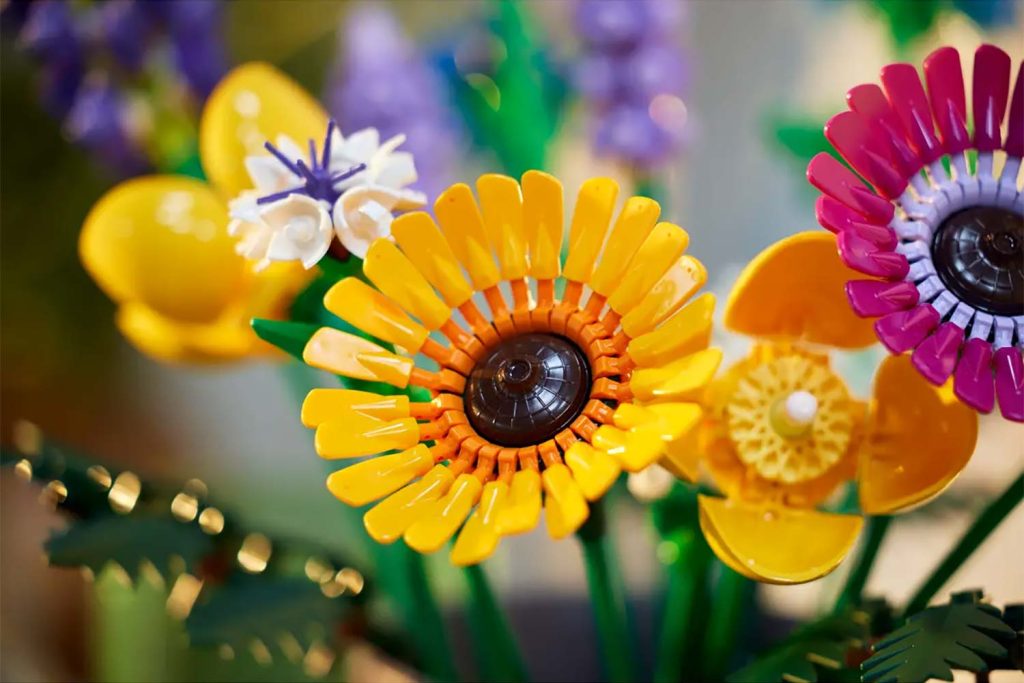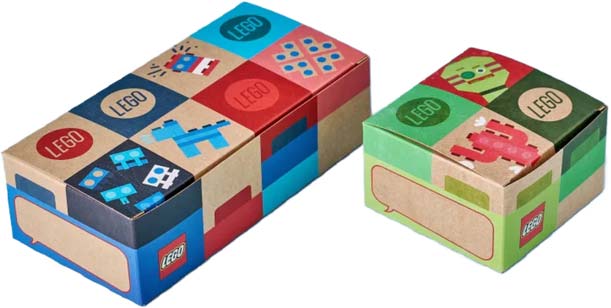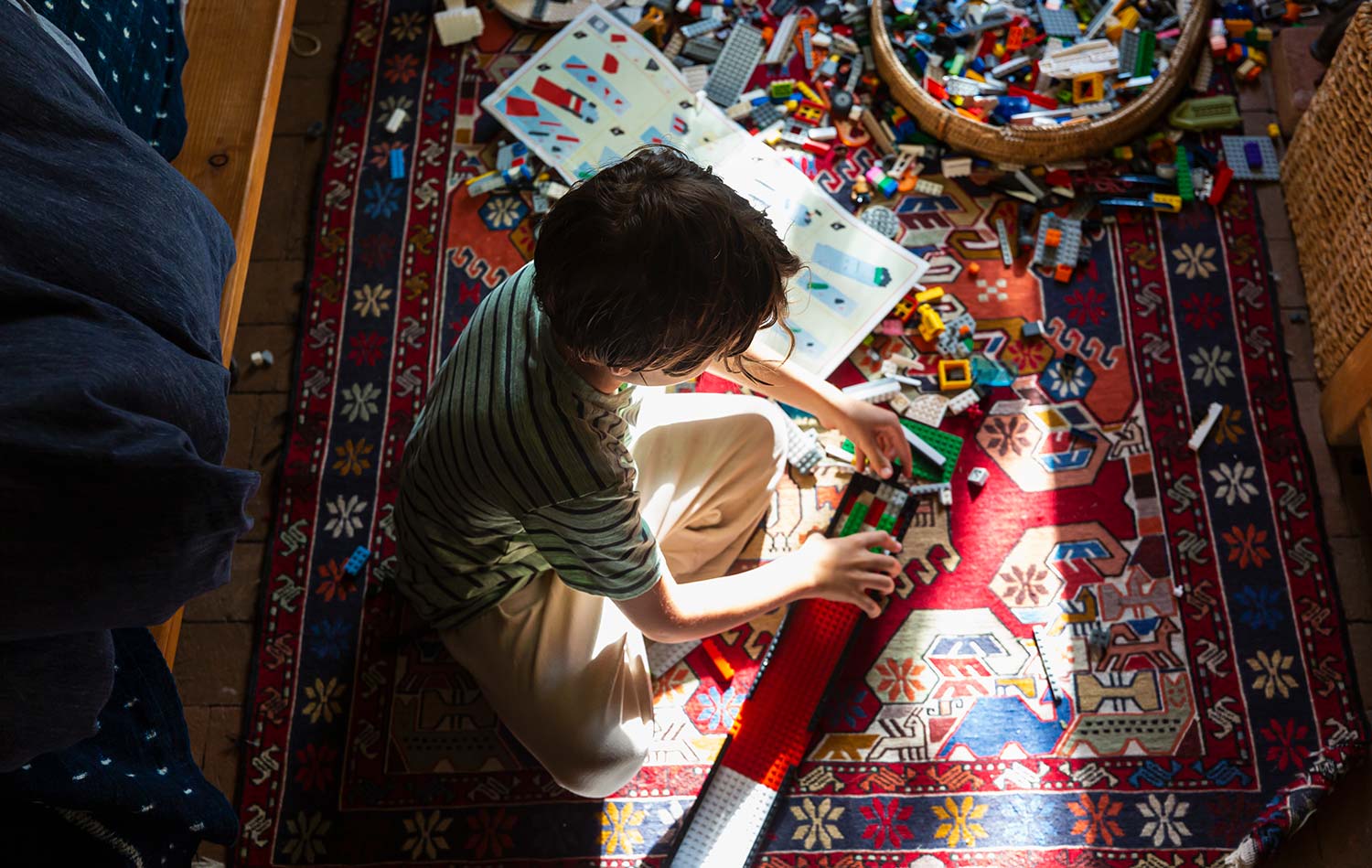When you think of LEGO, maybe you picture those iconic little bricks that fit perfectly together, no matter how long ago you bought them. Far from being just a child’s toy, if you’re anything like me, you’ve probably got a stash tucked away, waiting to be brought out on a rainy day when you’re feeling creative. And now, as we become more mindful of our impact on the planet, LEGO is focused on ensuring those beloved bricks of ours are as good for the environment as they are for our imagination.
LEGO’s sustainability mission
In the world where sustainable packaging and products are at the forefront of consumers’ minds, LEGO has a very clear goal: by 2032, they want their bricks and elements to be made from more sustainable materials. That might sound like ages away, but LEGO has already made some impressive progress.
Take their use of bio-polyethylene (bio-PE), for example. This isn’t just regular plastic. Since 2018, LEGO has been using bio-PE to create their flexible elements – think flowers, bushes, and those tiny little minifigure accessories we love so much. And where does bio-PE come from? Sugarcane! Yep, LEGO’s plant elements are literally made from plants.
“Sugarcane is a fast-growing, robust plant that stores CO2 from the atmosphere during its annual growth cycle. This not only conserves fossil raw materials, which are becoming increasingly scarce, but also helps to reduce CO2 emissions. Depending on the Green PE grade, the percentage of renewable carbon ranges from 80% to 100%, according to the ASTM D6866 standard.”
~ FKUR
You can watch how this works here:
They’ve partnered with the World Wildlife Fund (WWF) to make sure the sugarcane is sustainably sourced too, following the guidance from the WWF’s Bioplastic Feedstock Alliance (BFA) and adhering to the Bonsucro Chain of Custody standard, so we’re talking real eco-cred here.
In fact, LEGO has over 200 different bio-PE elements in their sets now, and around half of all their sets contain at least one. So, next time you’re building your latest masterpiece, you might just be holding a little piece of the future.
The power of the brick
One of the things I love most about LEGO is that a brick I had as a child can still fit perfectly with a brick I buy today. It’s a design that’s stood the test of time, and it’s this long-lasting durability that makes LEGO special. The quality and durability is also unmatched, which you’ll know if you’ve ever bought a fake set, accidentally or otherwise. But when it comes to sustainability, that presents a bit of a challenge.
LEGO has incredibly high standards when it comes to “clutch power” – the ability of bricks to stick together (and pull apart with the right amount of effort). That’s why, when they’re developing new materials, they need to make sure these new sustainable-material bricks hold up just as well as their old classic designs. It’s all great having eco-friendly bricks, but they need to be safe, durable, and still give that satisfying click when you put them together.
Of course, that focus on quality, coupled with a timeless and ageless appeal means your Lego lasts for life and beyond – unlike so many other toys, which end up in landfill or the ocean.
Over the years, LEGO has tested over 600 different materials to find the perfect balance between sustainability and performance. It’s a work in progress, but the future of LEGO is certainly greener by the day.
Giving old Lego a new life
While LEGO works on making future bricks more sustainable, they’re also encouraging us to keep those older bricks in play. After all, part of sustainability is about reusing what we already have. Through programs like LEGO Replay, LEGO fans in the UK, US, and Canada can donate their old bricks to be passed on to new generations of builders. Whether they end up in the hands of friends, family, schools, or charities, those bricks are far from done with their journey.
“After receiving your old bricks, we sort them and transform them into new items such as storage boxes for toys! We then fill these boxes with LEGO bricks before our charity partner, In Kind Direct, delivers them to local schools and charities to help inspire play and creativity.”
It’s a brilliant way to make sure that no brick goes to waste, and let’s be honest, who doesn’t love the idea of helping someone else experience the magic of LEGO, one of the best things in life!
Material breakthroughs: kitchen worktops and fishing nets
In their quest to make more of their products from recycled and renewable materials, LEGO has come up with some seriously ingenious ideas. One of the coolest innovations is something called arMABS, which might sound like a futuristic robot, but it’s actually a clever material made using recycled waste from artificial marble kitchen worktops (you have to wonder what made them decide to try that, specifically!). So, the next time you’re admiring a transparent LEGO piece like a lightsaber, windscreen, or even a little minifigure visor, know that you’re not just holding a piece of LEGO magic – there’s a bit of kitchen countertop in there too! Who knew?
There’s also ePOM, another cutting-edge plastic that’s due to debut in 2025. Now, this one’s really exciting because it’s made using a mix of renewable energy and CO2 from bio-waste – so turning something that would normally be harmful to the environment into something useful. ePOM will be used for some of the tougher LEGO parts, like axles and other rigid elements that need to stand up to a bit more handling and play.
It’s clever innovations like arMABS and ePOM that show LEGO is thinking outside the box (heh) and coming up with creative ways to reduce waste while still delivering the quality we expect.
A new age of Lego flowers
Now, let’s talk about one of my absolute favourite aspects of LEGO’s sustainability mission – the LEGO Botanical Collection. If you haven’t seen it yet, get ready to fall in love. LEGO has taken their plant-based plastic to the next level with this stunning range of buildable flowers, including roses, orchids, and even bonsai trees. Not only are many of the pieces made from that amazing sustainably sourced ‘sugarcane’ plastic that I told you about, but they also look gorgeous on display in the home.
These elements are fully compatible with all your other LEGO pieces, so you can mix and match to create your own unique floral displays. In fact, you’ll find lots of pieces from old sets mixed into the Lego flowers designs, inspiring you to add a few more of your own. If you’re used to building sets exactly to the instructions, think again – you can tweak, repose and change these sets so they’re your own creation which is a lot more fun. Whether you’re a master builder or just getting started, this collection is a great way to combine a love of LEGO with a passion for sustainability and something quirky for around the home.
View all our Lego flowers competitions here.

Out with the plastic, in with the paper
Here’s another way that Lego have made rapid improvements: I opened up Dancing Groot (set #76297) yesterday to build it with my kid and was delighted to find those single-use plastic bags had gone, replaced with sturdy paper that is fully recyclable.
Lego says that making this transition wasn’t easy. They had to ensure that the bags met the brand’s high standards and were able to withstand shipping, humidity, and factory conditions, all without tearing. And because they’re pre-packaged with the all-important numbers that help guide your build, they had to maintain quality during the packaging process.
To get it just right, Lego tested over 70 different types of paper. It took years of trial and error, but now these paper bags are rolling off production lines in factories across Europe and Asia, with a full rollout expected across America this year.
I also noticed on my last visit to the Lego store that it had swapped the plastic cups out of its Pick & Build walls in favour of flat-pack paper containers (at first glance they look smaller but trust me, you can pack these solid and they’re just as good value). Even the packaging for the build-a-minifigure collectibles has gone eco-friendly, with recyclable cardboard boxes now replacing single-use plastic. This change alone will save around 30 tonnes of plastic each year.

The bigger picture: LEGO’s climate commitments
Sustainability goes beyond the bricks themselves. LEGO is aiming to reduce their overall environmental footprint too. They’ve set some ambitious targets, like reducing their greenhouse gas emissions by 37% by 2032 and achieving net-zero emissions by 2050. Sure, we’re used to hearing that talk from corporates these days, but it’s good to see that Lego is actively working towards these targets, by improving energy efficiency, increasing their use of renewable energy, and reducing waste across their operations.
In fact, earlier in 2024, LEGO announced that they would be tying a portion of their employees’ bonuses to how well they meet these emissions targets. It’s a bold move, and hopefully one that will inspire other companies to follow suit. This game-changing project has been fully supported by LEGO’s Executive Leadership Team and Board. Tim Brooks, LEGO’s Head of Sustainability, shared some behind-the-scenes insights into how this initiative came together, and it’s clear that it wasn’t as simple as just slapping a carbon KPI onto everyone’s performance reviews.
One key takeaway? A carbon KPI tied to bonuses sounds straightforward, but it takes time to get right. From ensuring accuracy in auditing to deciding on the overall scope, there’s a lot of work that goes into making sure the system is both fair and effective. It’s not just about hitting a reduction number – the ambition and strategy behind the targets are just as important.
LEGO has started by focusing on Scope 1 and 2 emissions (direct emissions from their operations and energy use), with a bit of Scope 3 (indirect emissions from the supply chain). And while it’s tempting to wait for full data before implementing such a program, LEGO decided to take action with what they had, knowing they could build on it later. As Brooks notes, it’s better to start with what you’ve got than wait endlessly for perfect data.
Interestingly, Brooks pointed out that once employees realised part of their salary was tied to carbon performance, the level of engagement skyrocketed. Teams across the company wanted to get involved, offering ideas and seeking guidance on how they could make a difference. To manage this surge of interest, LEGO made sure they had plans in place to support teams eager to take action.
Finally…
As we all become more eco-conscious, it’s great to see companies like LEGO taking real steps toward a greener world. And with the durability of Lego and increasingly sustainable sets like the Lego Botanicals collection, we can all get involved, one brick (or flower!) at a time.
Click here to see all of our Lego competitions. LEGO® is a trademark of the LEGO Group of companies which does not sponsor, authorise or endorse this site.










